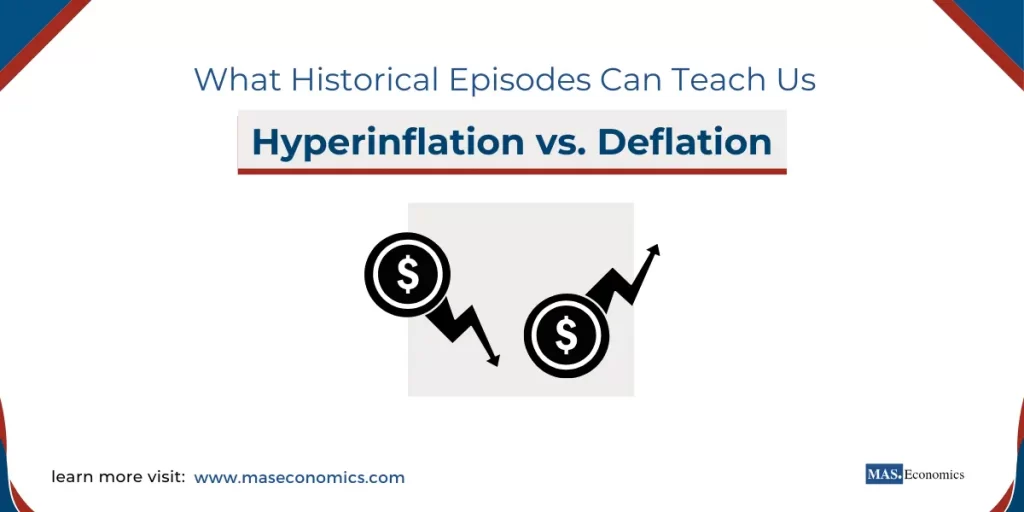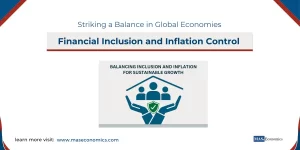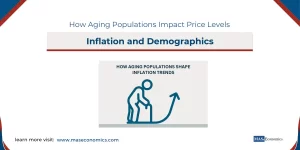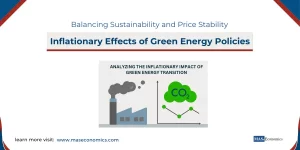Hyperinflation vs. Deflation represents two extreme manifestations of inflation that bring critical disruptions to an economy. While hyperinflation is characterized by an uncontrollable and extreme rise in prices, deflation is marked by a prolonged decline in the general price level, leading to reduced spending and economic stagnation. Both hyperinflation and deflation often reflect underlying issues with money supply, fiscal policy, and public confidence, making them two sides of the same coin in the complex world of economic stability.
Hyperinflation
Hyperinflation refers to a situation where the price level rises uncontrollably, often defined by monthly inflation rates exceeding 50%. The economic landscape during hyperinflation becomes chaotic, and the currency loses its function as a store of value, making day-to-day transactions nearly impossible without a stable alternative currency.
Causes of Hyperinflation
The primary cause of hyperinflation is often related to fiscal mismanagement, especially where budget deficits are financed by printing more money. When governments, faced with extreme fiscal challenges, resort to the central bank for funds, an excessive increase in the money supply can occur, driving prices up at an exponential rate. For instance, during the hyperinflation in Germany in 1923, the government printed vast amounts of money to pay off reparations from World War I, which eventually led to a collapse in public confidence and a devaluation of the currency.
Radical devaluation of the domestic currency is another factor that drives hyperinflation. Exchange rate instability often initiates a vicious cycle where devaluation leads to higher import costs, further pushing up domestic prices. This was evident in several Latin American countries during the 1980s, where hyperinflation was driven by both massive fiscal deficits and ongoing currency devaluations.
The Dynamics of Hyperinflation
Hyperinflation follows a typical pattern: it starts with an inflationary shock, such as a sharp rise in government spending, often combined with currency devaluation. As prices rise, workers demand higher wages, and companies, in turn, increase prices to maintain profitability. This results in a wage-price spiral, where wages and prices rise in tandem, with no effective controls in place to curb the cycle.
In the case of Germany’s hyperinflation in 1923, the inflationary process was further accelerated by the need to provide higher liquidity to firms, as increased prices required higher levels of working capital. The central bank found itself under immense pressure to provide this liquidity, which further exacerbated the money supply and fueled inflation.
Hyperinflation often ends with an equally dramatic monetary overhaul. In Germany, the hyperinflation was ended by the introduction of the Rentenmark, a new currency that was backed by assets such as land and industrial goods. A similar approach was used in Zimbabwe during the 2000s, where hyperinflation led to a complete collapse of the monetary system and subsequent adoption of foreign currencies, such as the US dollar, to restore some degree of price stability.
Deflation
Deflation represents the opposite side of the inflationary coin. It is marked by a persistent decline in the general price level and, more critically, a contraction in economic activity. Deflation can be equally damaging as hyperinflation, causing economic stagnation and increasing the real burden of debt.
Causes of Deflation
Deflation typically arises from a collapse in aggregate demand. During periods of economic downturn, like the Great Depression of the 1930s, consumer and business confidence wanes, leading to reduced spending. With less demand, companies are forced to cut prices to attract buyers, creating a deflationary spiral where lower prices lead to further reductions in spending, reduced profitability, and eventually job losses.
Another contributing factor to deflation is excessive wage flexibility. As nominal wages decline in a deflationary environment, purchasing power diminishes, further reducing demand. This kind of downward adjustment in wages and prices, rather than helping the economy recover, often deepens the recession, creating a cumulative effect of falling income and output.
The Impact of Deflation
Deflation affects both the real economy and the financial system. As prices fall, the real value of debt increases, which puts tremendous pressure on households, firms, and even governments. The burden of debt, which was once manageable, becomes unsustainable when incomes decline and prices fall. During the Great Depression, many farmers and businesses in the United States went bankrupt because they could no longer meet their debt obligations after the price of their produce fell below the cost of production.
The real debt effect, as pointed out by economist Irving Fisher, played a crucial role in the severity of the Great Depression. Despite efforts to reduce nominal debt, the real burden of debt rose dramatically because of falling prices, which amplified the economic downturn.
Hyperinflation vs. Deflation
Economic Management and Policy Approaches
The management of hyperinflation and deflation requires very different economic policies. Hyperinflation is often controlled by tightening monetary policy and implementing fiscal discipline. During the German hyperinflation, the introduction of a new currency, combined with strict fiscal measures, eventually restored public confidence. The termination of deficit financing through central bank money creation was a critical step in ending hyperinflation, as emphasized by economist Thomas Sargent.
In contrast, deflation calls for expansionary policies aimed at boosting demand. During the Great Depression, many countries eventually adopted expansionary fiscal policies, including large public works programs, to boost spending and increase aggregate demand. In addition, central banks lowered interest rates in an attempt to make borrowing cheaper and encourage both businesses and consumers to spend more.
One of the key lessons from these episodes is the importance of maintaining confidence in the monetary system. In hyperinflation, confidence is lost when the value of money is undermined by excessive issuance. In deflation, confidence is lost when economic actors expect prices to keep falling, leading them to delay consumption and investment. Central banks and governments need to act swiftly to stabilize expectations—whether by limiting money supply growth in hyperinflation or by expanding it during deflation.
The Role of Exchange Rates
Exchange rate dynamics play a significant role in both hyperinflation and deflation. During hyperinflation, rapid currency depreciation often exacerbates price increases by making imports more expensive. This was evident in the hyperinflation episodes of Latin America, where currency depreciation was both a symptom and a cause of runaway inflation.
On the other hand, exchange rates can act as a deflationary force when a currency appreciates significantly. A stronger currency can make exports more expensive and imports cheaper, thus reducing aggregate demand for domestically produced goods. The deflation experienced by Japan in the 1990s was partly attributed to an appreciating yen, which dampened export growth and contributed to the prolonged economic stagnation.
Modern Implications
Hyperinflation Lessons for Today
The hyperinflationary episodes of history teach us the importance of fiscal discipline and the dangers of unchecked money supply growth. Modern central banks, like those in developed economies, now have mechanisms in place to avoid excessive money creation, including transparent communication and inflation-targeting policies. However, in times of severe economic stress, such as during wars or pandemics, governments must tread carefully to ensure that deficit spending does not spiral out of control and lead to hyperinflation.
The concept of “monetary anchors,” such as linking the currency to a stable asset or employing a strict monetary policy framework, has been used to prevent hyperinflation. These lessons are particularly relevant for developing countries facing fiscal stress and a reliance on external borrowing, which can trigger a crisis of confidence and currency collapse.
Deflation Lessons for the Future
Deflation, while less dramatic than hyperinflation, can be equally destructive if not addressed appropriately. The lessons from the Great Depression highlight the importance of preventing a downward wage-price spiral. Governments and central banks should use expansionary fiscal and monetary policies to prevent deflation, ensuring that nominal wages remain relatively stable even during downturns.
In the modern context, tools like quantitative easing (QE) have been employed by central banks to combat deflation. For example, the European Central Bank (ECB) and the Bank of Japan have used QE to inject liquidity into their economies, encouraging spending and investment. This approach has helped prevent prolonged deflationary episodes, though it has also introduced new challenges, such as rising asset prices and potential financial instability.
Conclusion
Hyperinflation vs. Deflation highlights two extremes of price level instability, each with unique causes and consequences. Hyperinflation is typically driven by fiscal mismanagement and a loss of public confidence, while deflation generally results from collapsing demand and excessive wage adjustments. Historical experiences underscore that both phenomena require proactive policy responses—hyperinflation demands fiscal restraint and tight monetary policy, whereas deflation calls for expansionary measures to stimulate demand.
Central banks today must be vigilant in monitoring both risks, ensuring they have the appropriate tools to counteract each. Learning from the past, policymakers need to maintain a balance between avoiding runaway inflation and preventing a deflationary spiral, striving for steady growth and price stability. Understanding these historical lessons can help prevent the economic devastation that hyperinflation and deflation have caused in the past and guide modern economies toward more stable and sustainable paths.
FAQs
What is the main difference between hyperinflation and deflation?
Hyperinflation is characterized by an uncontrollable and extreme rise in prices, where the currency loses value rapidly. Deflation, on the other hand, is marked by a prolonged decline in the general price level, often leading to reduced spending and economic stagnation. Hyperinflation is driven by excessive money supply, while deflation arises from collapsing demand and decreased consumer spending.
What typically causes hyperinflation?
Hyperinflation is often caused by fiscal mismanagement, especially when governments finance budget deficits by printing more money. This excessive money supply devalues the currency, leading to runaway inflation. Other factors, like radical currency devaluation, also contribute to hyperinflation by making imports more expensive and increasing domestic prices.
How does deflation affect an economy?
Deflation can lead to a downward economic spiral as falling prices reduce company revenues, leading to lower wages and higher unemployment. The real burden of debt increases, making it harder for households and businesses to repay loans, which can lead to bankruptcies and financial instability. This vicious cycle of reduced demand and declining prices can cause prolonged economic stagnation.
How do central banks typically respond to hyperinflation and deflation?
To combat hyperinflation, central banks usually implement tight monetary policies, limiting money supply growth and restoring public confidence in the currency. For deflation, central banks use expansionary policies like lowering interest rates or quantitative easing to stimulate demand. These contrasting approaches reflect the different economic challenges each situation presents.
What role does the exchange rate play in hyperinflation and deflation?
During hyperinflation, a depreciating currency increases import costs, which further drives up prices domestically, creating a feedback loop of inflation. In deflation, an appreciating currency can reduce export demand and lower import prices, which can suppress domestic production and worsen deflationary pressures. Thus, exchange rate stability is crucial in maintaining price stability.
Thanks for reading! Share this with friends and spread the knowledge if you found it helpful.
Happy learning with MASEconomics




